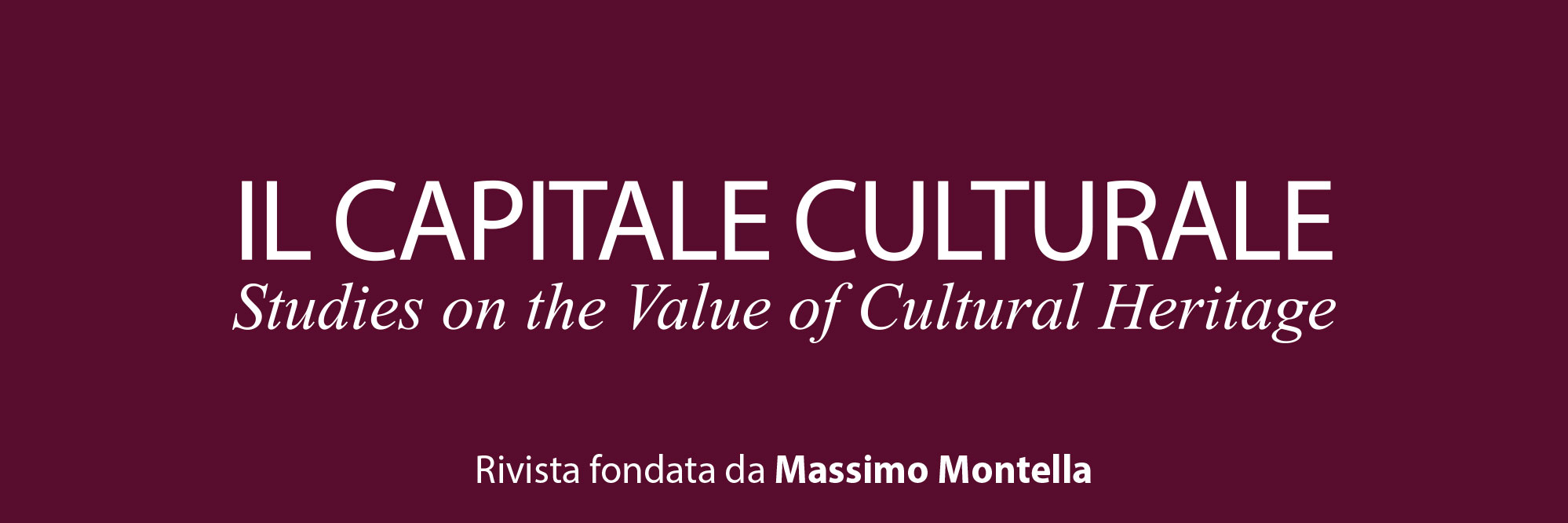Conspectu legar populi: An Introduction to the Iconic Life of the Metamorphoses in Europe and Beyond
Downloads
Pubblicato
Fascicolo
Sezione
Licenza
Tutti i materiali pubblicati sono coperti da copyright, mantenuto dall'Università di Macerata che ne supporta finanziariamente e tecnicamente la pubblicazione.
La licenza adottata è la Creative Commons - Attribuzione/Condividi allo stesso modo. Ovvero, gli autori che pubblicano su questa rivista accettano le seguenti condizioni:
- Gli autori mantengono i diritti sulla loro opera e cedono alla rivista il diritto di prima pubblicazione dell'opera, contemporaneamente licenziata sotto una Licenza Creative Commons - Attribuzione che permette ad altri di condividere l'opera indicando la paternità intellettuale e la prima pubblicazione su questa rivista.
- Gli autori possono aderire ad altri accordi di licenza non esclusiva per la distribuzione della versione dell'opera pubblicata (es. depositarla in un archivio istituzionale o pubblicarla in una monografia), a patto di indicare che la prima pubblicazione è avvenuta su questa rivista.
- Gli autori possono diffondere la loro opera online (es. in repository istituzionali o nel loro sito web) prima e durante il processo di submission, poiché può portare a scambi produttivi e aumentare le citazioni dell'opera pubblicata.
DOI:
https://doi.org/10.13138/2039-2362/3503Riferimenti bibliografici
Allen C. (2002), Ovid and art, in The Cambridge companion to Ovid, edited by Ph. Hardie, Cambridge: Cambridge University Press, pp. 336-368.
Barolsky P. (2014), Metamorphoses and History of Baroque Art, in A Handbook to the Reception of Ovid, edited by J.F. Miller, C.E. Newlands, Malden: Wiley Blackwell, pp. 202-216.
Boccardo P. (2011), La decorazione, in Palazzo Doria Spinola. Architettura e arredi di una dimora aristocratica genovese da un inventario del 1727, edited by R. Santamaria, Genova: Le Mani, pp. 103-127.
Bolzoni L. (2001), The Gallery of Memory: Literary and Iconographic Models in the Age of the printing press, Toronto: University of Toronto Press.
Brown S.A. (1996), The Metamorphosis of Ovid. From Chaucer to Ted Hughes, London: Duckworth.
Bull M. (2005), The Mirror of the Gods: Classical Mythology in Renaissance Art, New York: Oxford University Press.
Capriotti G. (2017), Waffen der Verteidigung. Drei Skulpturen von Benvenuto Cellini als Reaktion auf die Angriffe Baccio Bandinellis, in Vom Streit zum Bild. Bildpolemik und andere Waffen der Künstler, edited by D.H. Lehmann, Merzhausen: ad picturam, pp. 64-82.
Capriotti G. (2020), Il tempo delle fenici e degli unicorni Giulia Farnese e il ciclo decorativo del castello di Carbognano, Ancona: affinità elettive.
Capriotti G. (2021), Antiquity and “libri”. Ephebic male nudes in the mythological sculpture of Benvenuto Cellini, in Nackte Gestalten. Die Wiederkehr des antiken Akts in der Renaissanceplastik, edited by N. Hegener, Petersberg: Michael Imhof Verlag, pp. 168-185.
Cazes H. (2003), Les bonnes fortunes d’Ovide au XVIème siècle, in Lecture d’Ovide, publiées à la mémoire de Jean-Pierre Néraudau, edited by E. Bury, M. Nérauda, Paris: Belles lettres, pp. 239-264.
Consolino F.A., edited by (2020), After Ovid. Aspects of the Reception of Ovid in Literature and Iconography, Turnhout: Brepols.
Gal N. (2023), The Lack of the Father: Intersections of Greek and Israeli Mythology in the Photographs of Adi Nes, «Narrative Culture», 10, 1, pp. 26-60, doi: https://doi.org/10.1353/ncu.2023.0001.
LeVitte Harten D. (2007), “Less the Horror than the Grace”, in Adi Nes, Tel Aviv: Tel Aviv Museum of Art, pp. 146-128.
Llewellyn N. (1988), Illustrating Ovid, in Ovid renewed: Ovidian Influences on Literature and Art from the Middle Ages to the Twentieth Century, edited by C. Martindale, Cambridge: Cambridge University Press, 157-166.
Mack P., North J., edited by (2015), The Afterlife of Ovid. Bulletin of the Institute of Classical Studies, supplement, 130, London: Institute of Classical Studies.
Montanari G. (2015), Libri dipinti statue: rapporti e relazioni tra raccolte librarie, collezionismo e produzione artistica a Genova tra XVI e XVII secolo, Genova: De Ferrari - University Press.
Nova A. (2006), Centro, periferia, provincia: Tiziano e Romanino, in Romanino. Un pittore in rivolta nel Rinascimento italiano, Cinisello Balsamo: Silvana Editoriale, pp. 48-67.
Redford B. (2010), Speaking Pictures: Ovid and the Visual Arts, in Approaches to Teaching the Works of Ovid and the Ovidian Tradition, edited by B. Weiden Boyd, C. Fox, New York: Modern Language Association of America, pp: 23-26.
Reiss S.E., Wilkins D.G. (2001), Prologue, in Beyond Isabella. Secular Women Patrons of Art in Renaissance Italy, edited by S.E. Reiss, D.G. Wilkins, Kirksville: Truman State University Press, pp. XV-XX.
Sinensky T. (2017), Narcissus and the Nazir, «Lehrhaus», September 14, <https://thelehrhaus.com/scholarship/narcissus-and-the-nazir/>, 21.1.2024.




